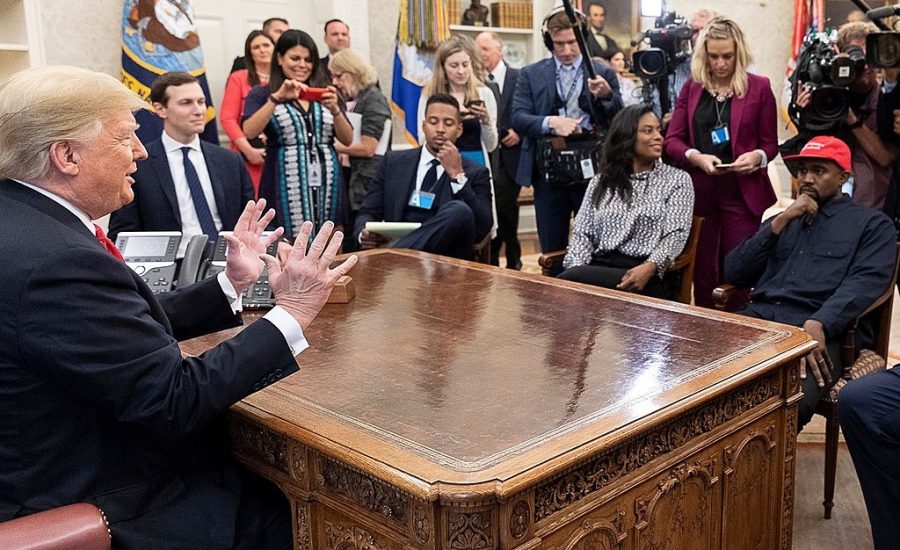Art cannot be separated from the artist
Rapper Kanye West met with then President Donald Trump at the Oval Office in October 2018. His open support stirred up a lot of controversy among his fans.
January 20, 2022
Michael Jackson’s music or Bill Cosby’s comedy might evoke a feeling of nostalgia for some. For this generation, Kanye West’s or Eminem’s raps might evoke similar positive feelings.
For others, these names bring to mind the problematic actions of these artists.
Because of the past problematic actions of some celebrities, separating the art from the artist becomes a murky impossibility.
Art can be an intensely personal experience, both for the creator and the audience.
Creating art gives artists an outlet to express their emotions, voice their opinions or come to terms with their experiences and trauma. These experiences resonate with audiences and create a sense of solidarity between the artist and audience.
However, this solidarity is arguably not worth the consequence of increasing the social presence of the artist who has behaved poorly. When “problematic” artists release music that people then stream, purchase and promote through word-of-mouth, their past actions are ignored and they can continue their career unimpeded, essentially allowing them to experience zero consequences for their behavior.
For example, Michael Jackson continued to release music and enjoy a life of fame after being accused of sexual abuse, although he was found not guilty in court.
Eminem has also caught controversy for past allegations of homophobia and for a charge of carrying a concealed weapon and assault, yet he remains one of Spotify’s most-streamed rappers.
Untangling the art from the artist can become even murkier when it comes to actors and film directors, as audiences are literally watching their fantasies and characters come to life onscreen.
Woody Allen is perhaps the best example of this.
While some fans maintain that he’s a great actor regardless of the accusations made against him, his creative works share obvious resemblances to him as a person. With cases as extreme as this one, being aware of the problematic behavior and choosing to ignore it in order to enjoy media can be wildly uncomfortable.
Simply, not associating the problematic — and often illegal— behavior of artists with the art they create seems like an exercise in cognitive dissonance.
The creative minds of these artists do not excuse their actions or supersede justice. While the talents of “problematic” artists can still be recognized, they cannot be completely taken out of the context of their behavior or beliefs.
Art reflects the artist, but it can also reflect the morals and beliefs of the fan. Problematic or not, the media we consume can say a lot about who we are and who we choose to support.
The art and the artist are a package deal— there is no separating them, even when it’s uncomfortable to acknowledge.



